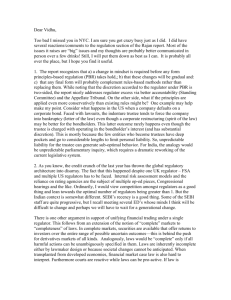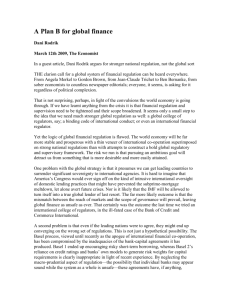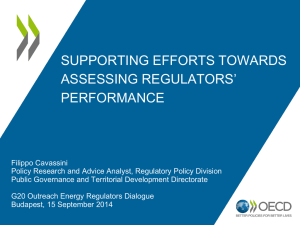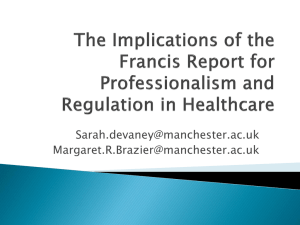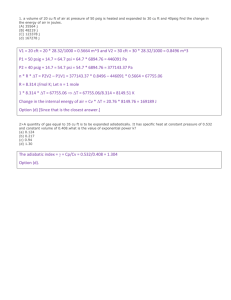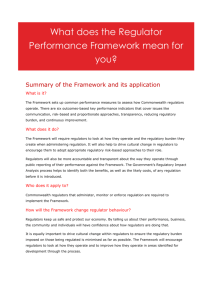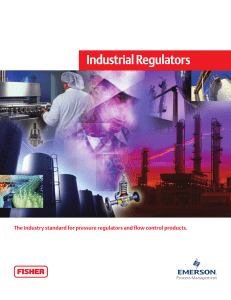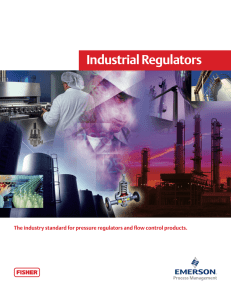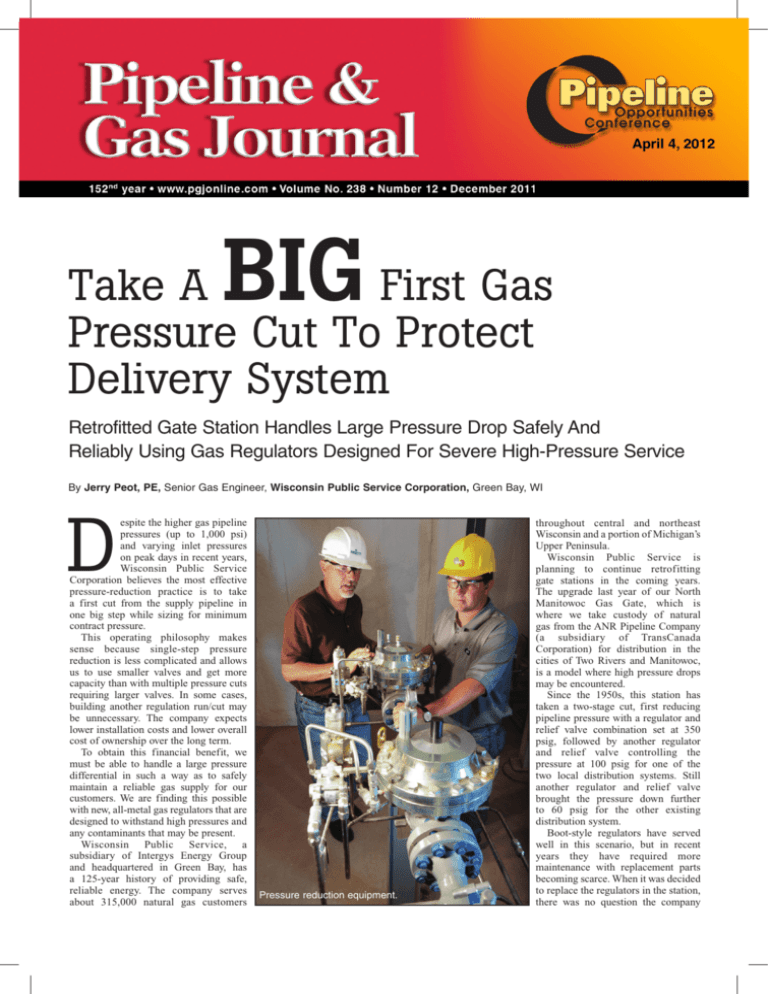
BIG
Take A
First Gas
Pressure Cut To Protect
Delivery System
Retrofitted Gate Station Handles Large Pressure Drop Safely And
Reliably Using Gas Regulators Designed For Severe High-Pressure Service
By Jerry Peot, PE, Senior Gas Engineer, Wisconsin Public Service Corporation, Green Bay, WI
D
espite the higher gas pipeline
pressures (up to 1,000 psi)
and varying inlet pressures
on peak days in recent years,
Wisconsin Public Service
Corporation believes the most effective
pressure-reduction practice is to take
a first cut from the supply pipeline in
one big step while sizing for minimum
contract pressure.
This operating philosophy makes
sense because single-step pressure
reduction is less complicated and allows
us to use smaller valves and get more
capacity than with multiple pressure cuts
requiring larger valves. In some cases,
building another regulation run/cut may
be unnecessary. The company expects
lower installation costs and lower overall
cost of ownership over the long term.
To obtain this financial benefit, we
must be able to handle a large pressure
differential in such a way as to safely
maintain a reliable gas supply for our
customers. We are finding this possible
with new, all-metal gas regulators that are
designed to withstand high pressures and
any contaminants that may be present.
Wisconsin Public Service, a
subsidiary of Intergys Energy Group
and headquartered in Green Bay, has
a 125-year history of providing safe,
reliable energy. The company serves
about 315,000 natural gas customers
Pressure reduction equipment.
throughout central and northeast
Wisconsin and a portion of Michigan’s
Upper Peninsula.
Wisconsin Public Service is
planning to continue retrofitting
gate stations in the coming years.
The upgrade last year of our North
Manitowoc Gas Gate, which is
where we take custody of natural
gas from the ANR Pipeline Company
(a subsidiary of TransCanada
Corporation) for distribution in the
cities of Two Rivers and Manitowoc,
is a model where high pressure drops
may be encountered.
Since the 1950s, this station has
taken a two-stage cut, first reducing
pipeline pressure with a regulator and
relief valve combination set at 350
psig, followed by another regulator
and relief valve controlling the
pressure at 100 psig for one of the
two local distribution systems. Still
another regulator and relief valve
brought the pressure down further
to 60 psig for the other existing
distribution system.
Boot-style regulators have served
well in this scenario, but in recent
years they have required more
maintenance with replacement parts
becoming scarce. When it was decided
to replace the regulators in the station,
there was no question the company
would upgrade to state-of-the-art regulators
reflecting our single-cut philosophy. This
meant dealing with a high differential pressure.
Our basic single-cut design involves an
operator/monitor setup for heated pipeline
gas following custody metering to prevent
pressure-drop freeze-ups by maintaining a
40°F outlet temperature. In this configuration,
the operator accommodates the entire pressure
drop to below 100 psig. The upstream inline
monitor is set at a slightly higher pressure to
maintain constant over-pressure safety on the
downstream supply. A redundant, or parallel,
operator/monitor pair is located adjacent
to the primary regulators. This identical
backup configuration will take over in case
of an operating failure. It is also used during
maintenance periods.
Differential pressures higher than 800
psig caused us to consider the Fisher® EZH
Series regulator, rated for inlet pressures up
to 1,500 psig. Contamination such as oil,
dirt, or debris may also be present in the gas
supply under those higher pipeline pressures.
The rugged, spring-close EZH has hardened
metal trim with a soft seat for reliable
bubble-tight shutoff. It is built for severe
service, able to withstand contaminants as
well as pressures and velocities that are
detrimental to rubber components.
Because of their favorable design and
maintenance characteristics, EZH Series
regulators are generally specified by
Wisconsin Public Service as monitors in
gate stations where the single-cut differential
pressure is greater than 800 psig.
In the North Manitowoc Gas Gate, an
EZH regulator was installed as the monitor
and the recently introduced Fisher EZHSO
Series was chosen for use as the operator
due to the potential 900 psig differential.
This model is designed to “fail open”
with a positive spring action. If it should
cease operating for any reason, there is a
high probability it will remain wide open,
Figure 1.
allowing the monitor to continue controlling
the downstream pressure.
This allows Operations time to respond
to an alarm by sending a repair crew to the
station. Generally, the crew can switch to
the backup system with minimal impact on
the gas supply to our customers. In the worst
case, if the monitor also fails, there is a high
probability it will fail-closed, shutting off the
flow entirely to protect the distribution system
from over-pressurizing. This setup is depicted
in Figure 1.
This upgrade was implemented at the
North Manitowoc Gas Gate in July 2010 with
the support of Novaspect, Inc., Emerson’s
local business partner headquartered in
Schaumburg, IL.
After about a month of operation, the
gas flow was switched to the backup pair
so that the operating regulators could be
opened up and inspected. This was done
once more following the first cold snap
last winter, and they haven’t been touched
since then. This system operated perfectly
throughout the unusually long winter.
However, an annual lock-up and orifice/
seat inspection will still be done. The topentry design of the EZH Series regulators
reduces the amount of time required for
preventive maintenance — an additional
cost-saving feature.
The regulator buildings at the North
Manitowoc Station are well-insulated and
noise attenuation was not employed with
the new setup. However, Emerson’s Noise
Attenuation Technology is available on EZH
Series regulators to reduce aerodynamic
noise generated by internal turbulence
created by high pressure drop ratios.
A new gate station for the City of
Manitowoc constructed during the summer
of 2011 is employing the same method of
pressure reduction in recognition of the
effectiveness of this approach for high
pressure drop situations. The EZH and
EZHSO Series regulators will be installed
for pressure reduction to replace existing
equipment in many instances, depending
on the service conditions at each regulation
station.
Either way, Wisconsin Public Service
is committed to a retrof it program
that will provide long-term reliability
and security for our commercial and
residential customers while reducing
maintenance costs. P&GJ
Reprinted with permission from Pipeline & Gas Journal, December 2011. © On the web at www.pgjonline.com.
© Oildom Publishing. All Rights Reserved. Foster Printing Service: 866-879-9144, www.marketingreprints.com.
For more information download a PDF brochure at delivr.com/1aqen_qr or by scanning the QR code with your smartphone.
PN D351970X012
Emerson Process Management Regulator Technologies, Inc.
310 East University Drive
McKinney, Texas 75069-1872 USA
+1 972-548-3574




